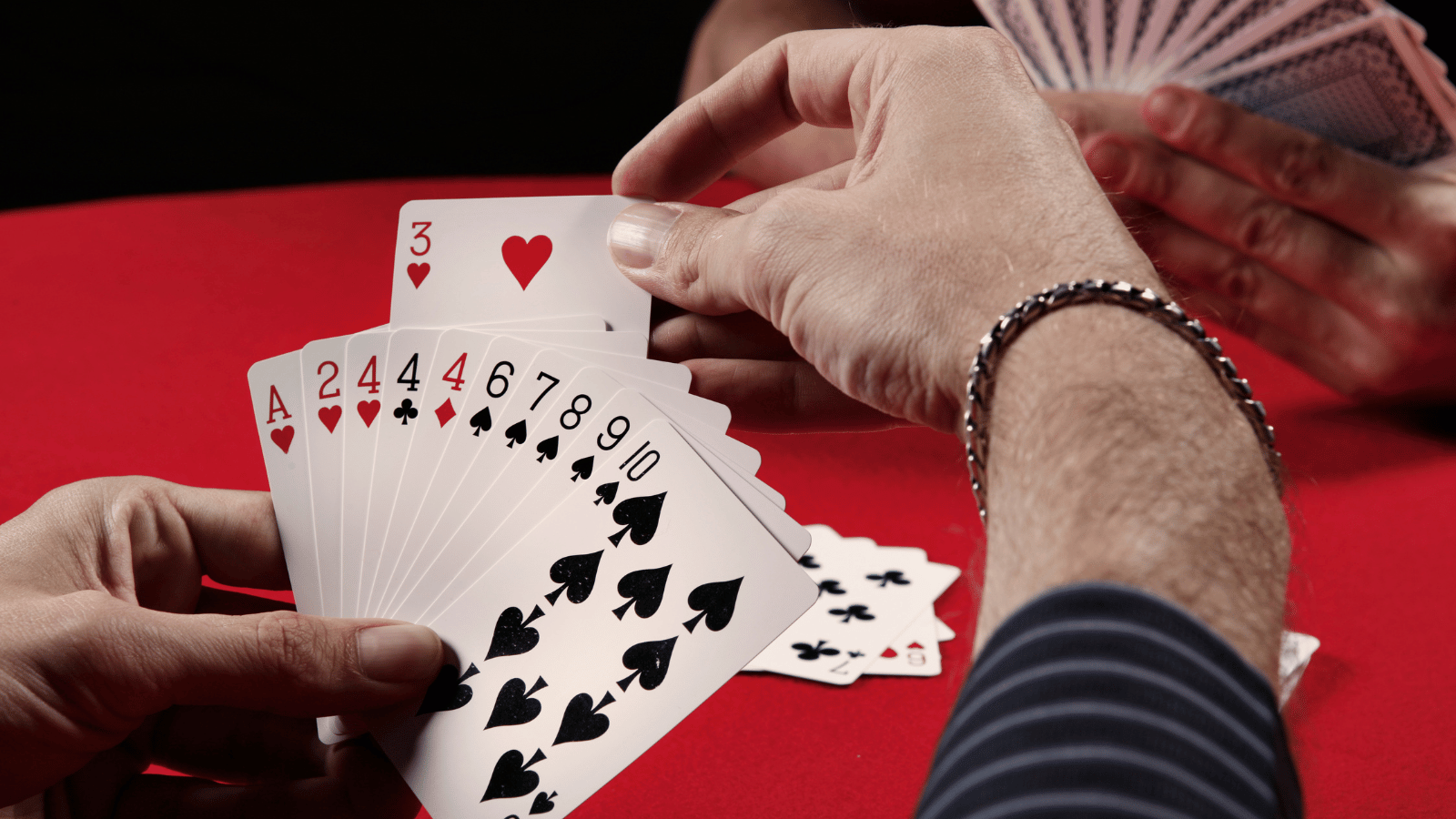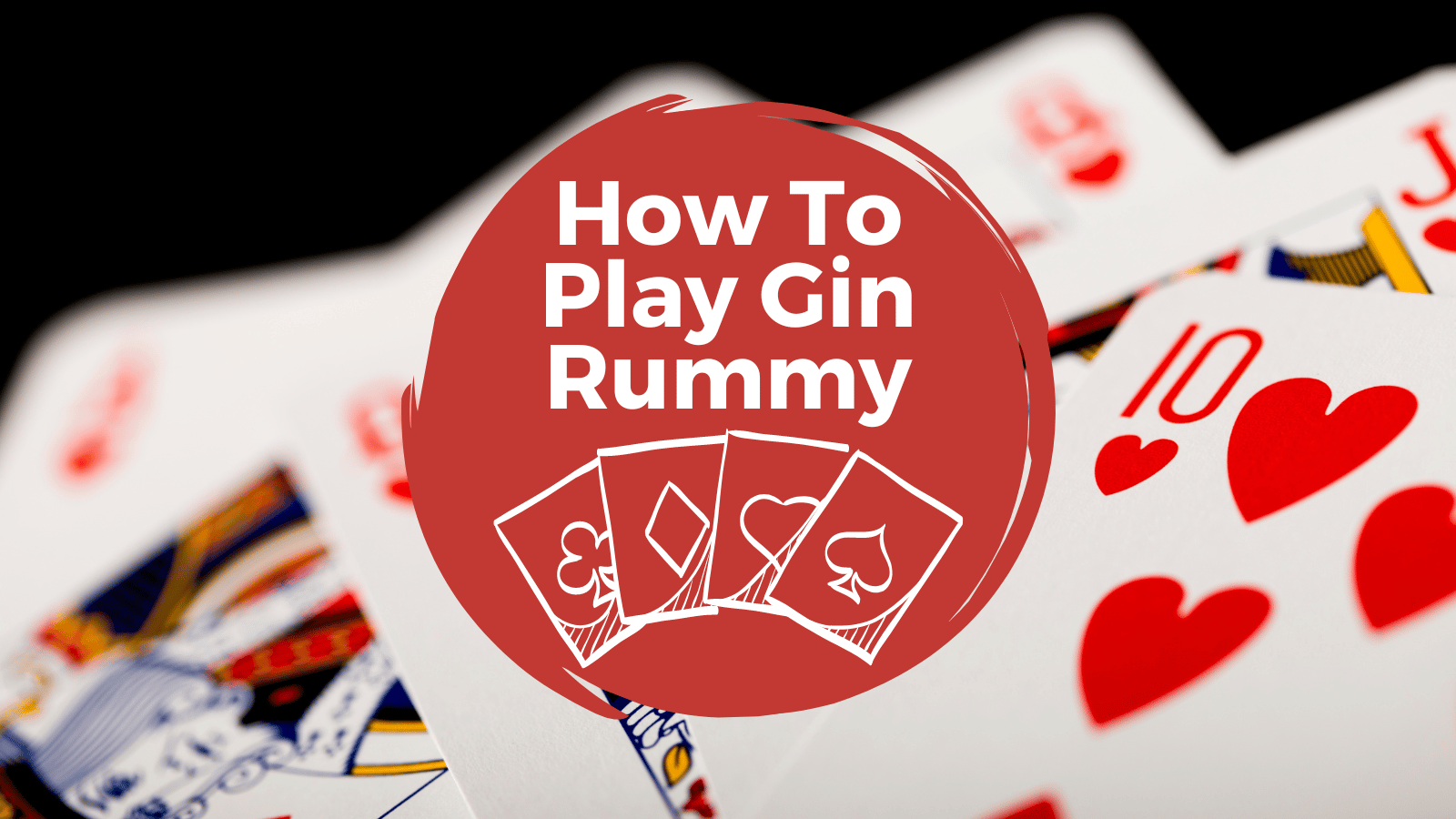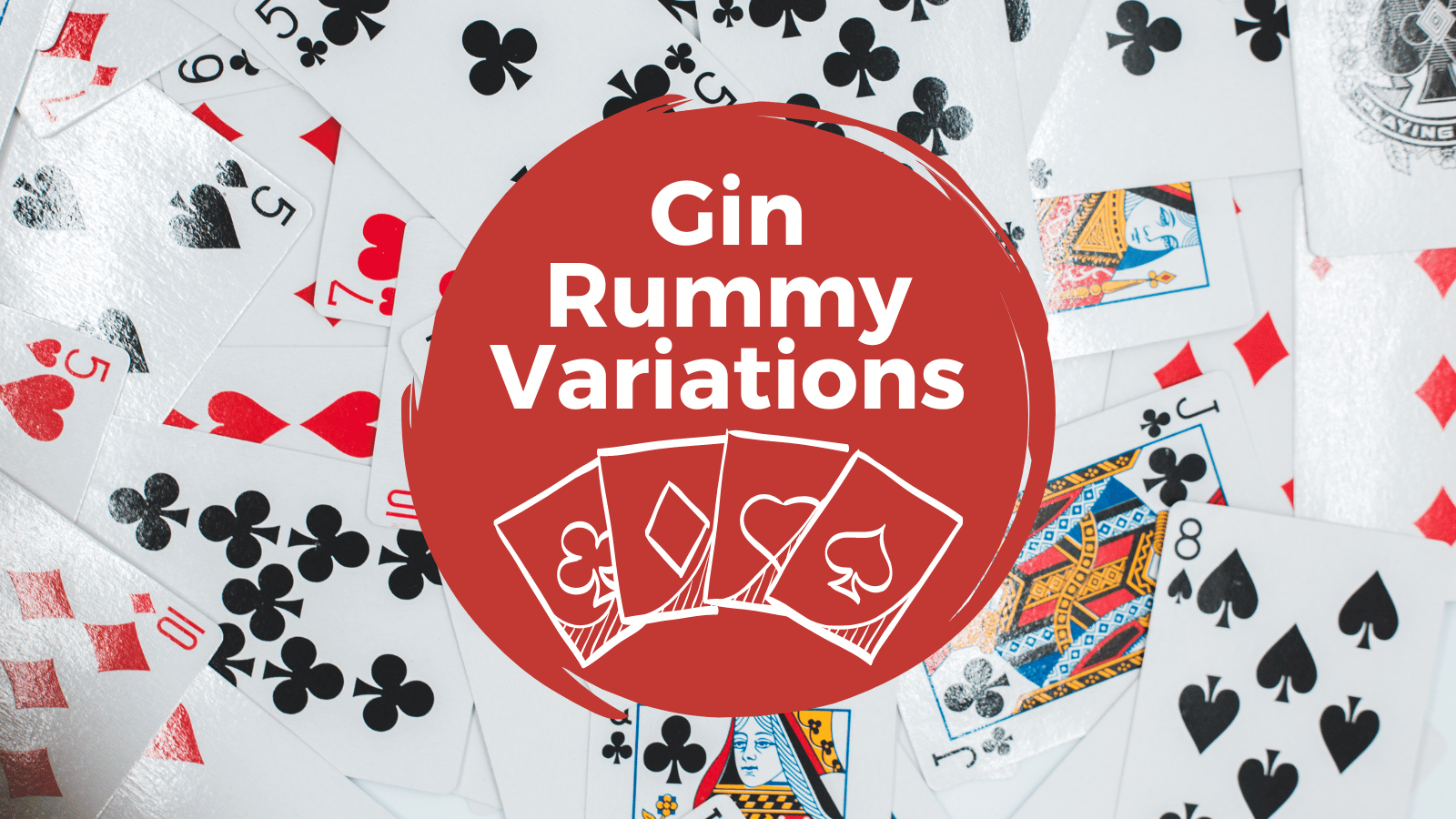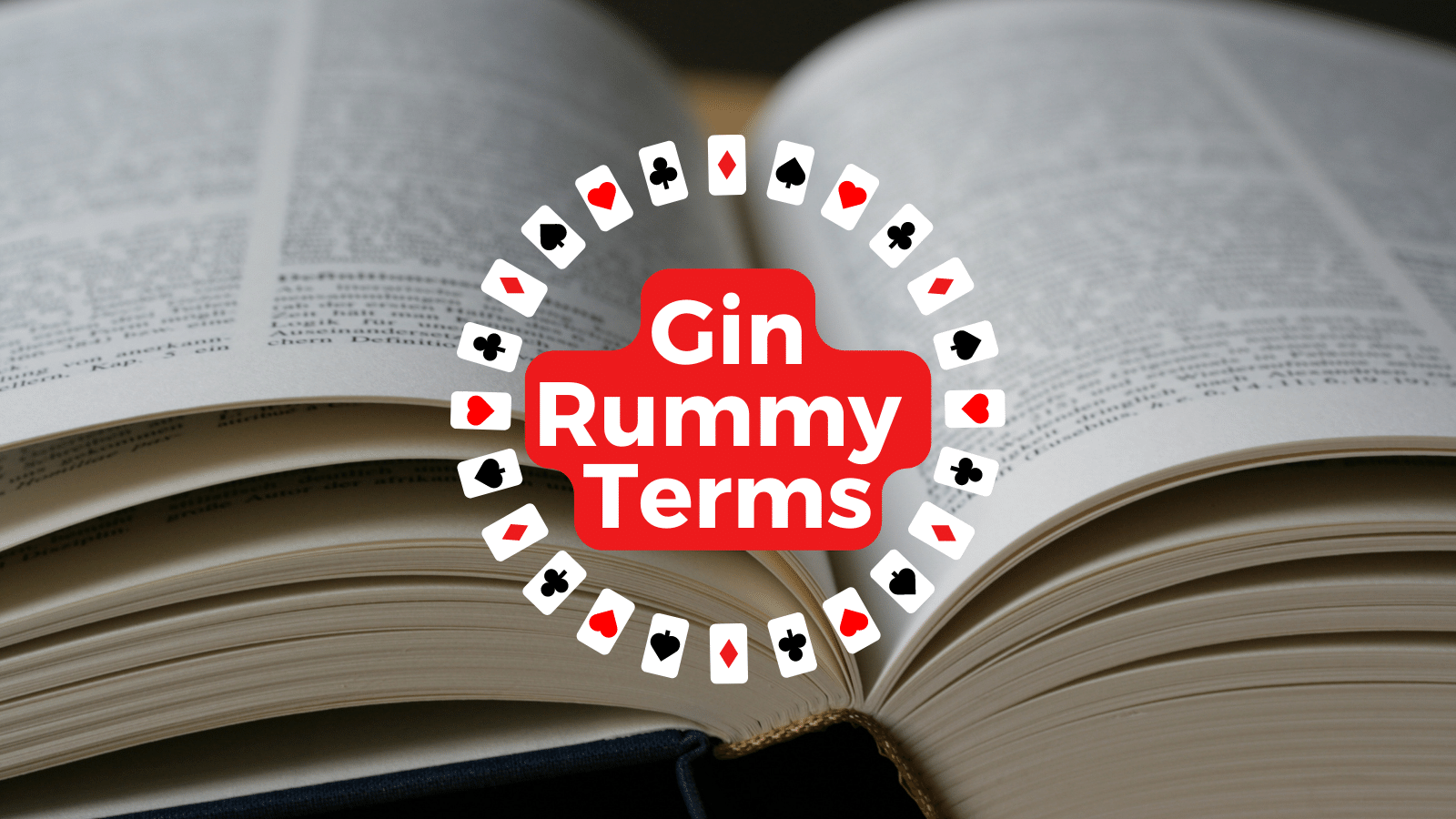Gin Rummy has become my wife’s and my new favorite two-player card game. However, during our search for a new game to play, we also stumbled upon Rummy.
The names are so similar we didn’t initially know they were even different games!
This left us wondering if Gin Rummy was the same as Rummy and how they were different.
Gin Rummy shares many rules with Rummy, but the primary difference is that players in Gin Rummy only lay down their sets and runs when they are ready to conclude the round. Also, in Gin Rummy, if an opponent possesses runs or sets in their hand, these will not be counted as points.
Of course, this barely scratches the surface, so let’s get into more of the details in the rest of the article.

Gin Rummy is a great game, but you need the basic rules to get the most out of it.
Check out our complete guide here at the link and improve your 1-on-1 game nights instantly!
Table of Contents
Rummy And Gin Rummy Comparison Table
| Element | Gin Rummy | Rummy |
|---|---|---|
| When to Play Sets and Runs | Players do not lay down sets and runs until they are prepared to end the round | Players lay down sets and runs as soon as they have them |
| How Points Are Scored | The player with the lowest score of deadwood cards in their hand scores points based on the value of their opponent’s deadwood cards | The winner of the round scores points based on the value of the cards remaining in their opponents’ hands |
| Number of Players | Typically played with two players | Can be played with two to six players |
| Winning Conditions | The game continues until one player reaches a predetermined number of points, typically 100 | The game continues until one player runs out of cards in their hand or until the draw pile runs out |
| Cards Left in Hand | At the end of the round, players may lay their cards on their opponent’s sets and runs | At the end of each round, the cards left in your hand are locked in against you |
Gin Rummy And Rummy In Brief
Gin Rummy is a popular card game played with two players.
To win, you must be the first person to score 100 points.
It is a variation of the classic Rummy game and has been around for over a century.
The objective of the game is to score points by forming sets and runs of cards and eliminating deadwood cards from one’s hand.
The game is played with a standard deck of 52 cards, and players take turns drawing and discarding cards until one player is able to form their hand into sets and runs and “knocks” to end the round.
Gin Rummy is known for its mix of strategy, skill, and luck, making it a favorite among card game enthusiasts.
Rummy is a popular card game that has been played for centuries, with variations played all over the world.
The game is typically played with two to six players and a standard deck of 52 cards.
The objective of the game is to form sets and runs of cards and to be the first player to eliminate all of the cards in their hand.
Players take turns drawing and discarding cards until a player is able to form a valid hand and “goes out” to win the round.
The Rules Of Rummy (Short Version)
Number of Players: 2-6
Materials: Standard deck of 52 cards
Objective: Be the first player to get rid of all of your cards OR be the first player to get to 100 points.
Setup: Deal the number of cards matching the number of players shown below:
- 2 players = 10 cards each
- 3-4 players = 7 cards each
- 5-6 players = 6 cards each
The rest of the cards are placed in the middle of the area and one card is turned over to create a discard pile.
The Play:
On their turn, a player may either draw a card from the draw pile or the top card from the discard pile.
The player then attempts to form sets and runs of cards in their hand.
A set is a group of three or four cards of the same rank, while a run is a group of three or more consecutive cards of the same suit.
To end their turn, they must discard one of their cards.
Once a player has formed a valid set or run, they may lay it face up on the table in front of them. The player may also add cards to sets or runs already on the table, or create new sets or runs.
To be clear, if a set or run is down, you can play on it, even if it’s not your own!
The round ends when one player has no cards left in their hand.
At the end of each round, the other players tally up the value of the cards remaining in their hand, and the winner scores points based on the value of the cards in their opponents’ hands.
Numbered cards are worth their pip value (Aces are 1, twos are 2, etc.). Face cards are all worth 10.
The game continues until one player reaches a predetermined number of points, typically 100.
The Rules Of Gin Rummy (Short Version)
Number of Players: 2 (more are possible, but less common)
Materials: Standard deck of 52 cards
Objective: Be the first player to get to 100 points.
Setup: Deal 10 cards each.
The rest of the cards are placed in the middle of the area and one card is turned over to create a discard pile.
The Play:
On their turn, a player may either draw a card from the draw pile or the top card from the discard pile.
The player then attempts to form sets and runs of cards in their hand.
A set is a group of three or four cards of the same rank, while a run is a group of three or more consecutive cards of the same suit.
Once a player has formed their hand into sets and runs, they may “knock” to end the round.
Only once they have a value of 10 or fewer unmatched cards or deadwood, may they knock.
Numbered cards are worth their pip value (Aces* are 1, twos are 2, etc.). Face cards are all worth 10.
Read more: Gin Rummy Aces & Other Common Questions
To knock, the player must place their hand face down on the table and declare that they have formed a valid hand.
The opponent then has one last chance to form their own sets and runs before the round ends.
Both the person who knocked and the opponent may play off the other’s sets and runs.
At the end of each round, the player with the lowest score of deadwood cards in their hand scores points based on the value of their opponent’s deadwood cards.
If the player who did not knock has fewer deadwood points left than the one who did, they get the points and a bonus 25 points for undercutting.
If the player lays down all 10 of their cards when they knock, it’s called Gin. For this, you also get 25 bonus points on top of the deadwood from your opponent.
If you lay all 11 cards (10 + the drawn card), this is called Big Gin. You get 50 bonus points on top of the deadwood from your opponent.
The game continues until one player reaches a predetermined number of points, typically 100.






